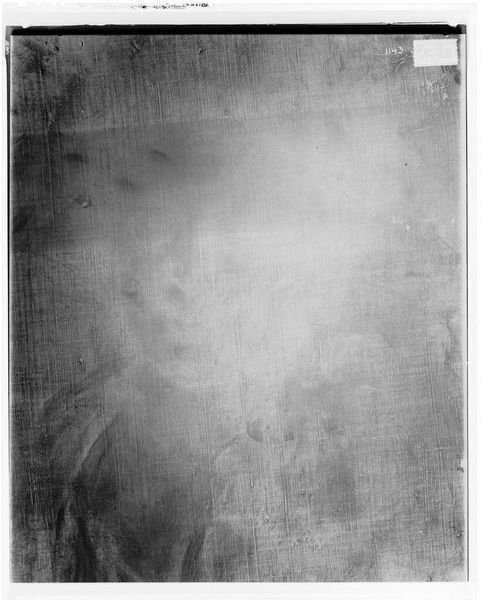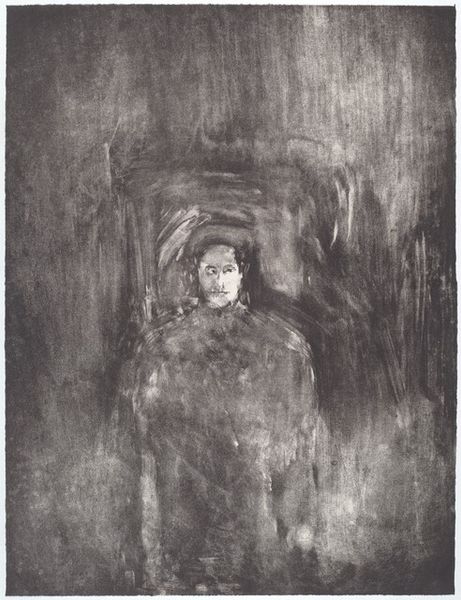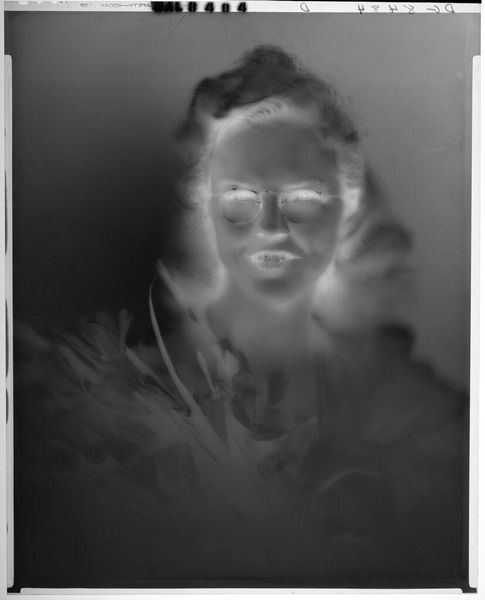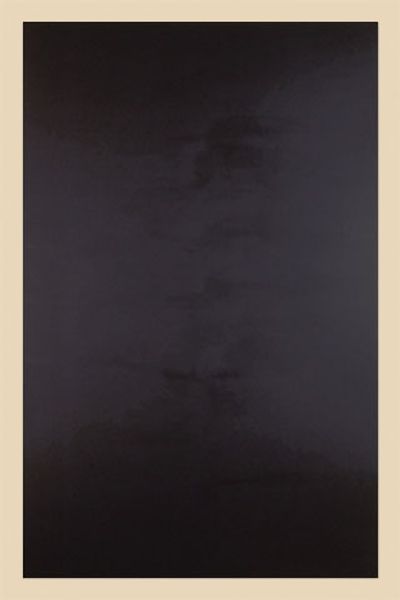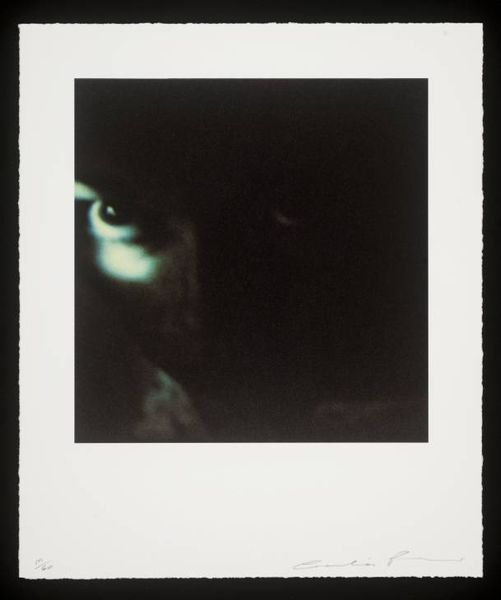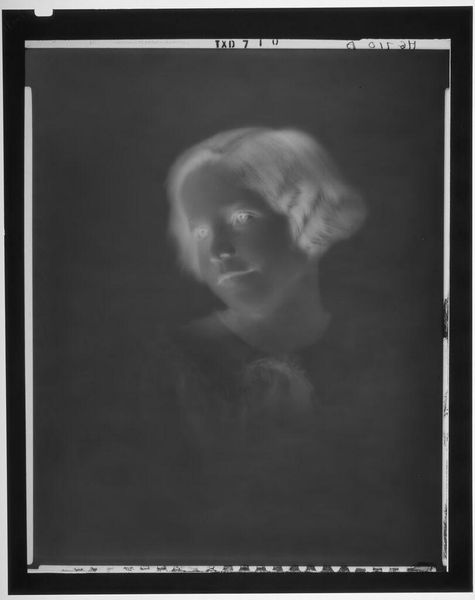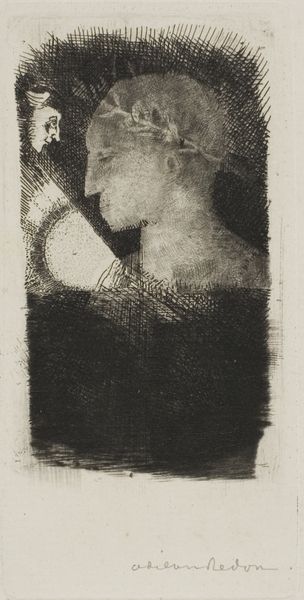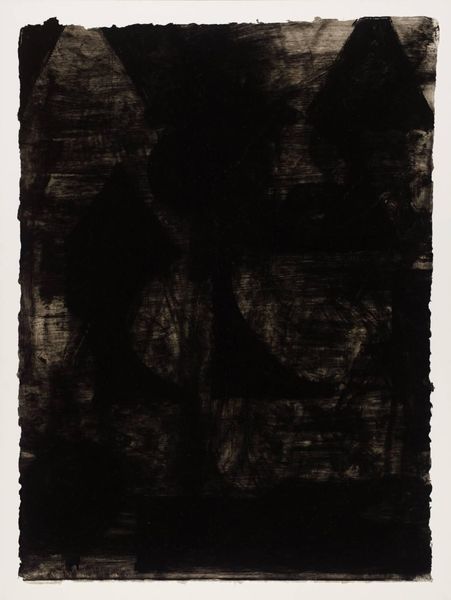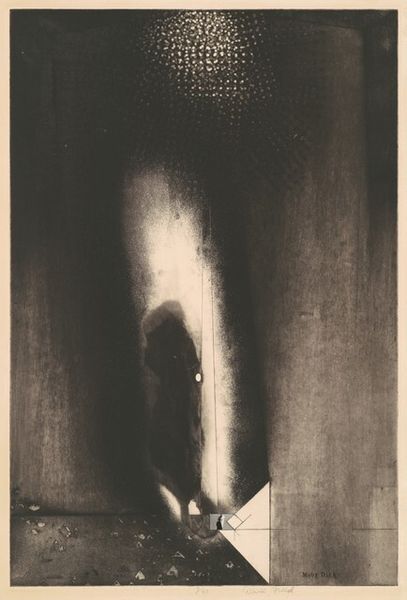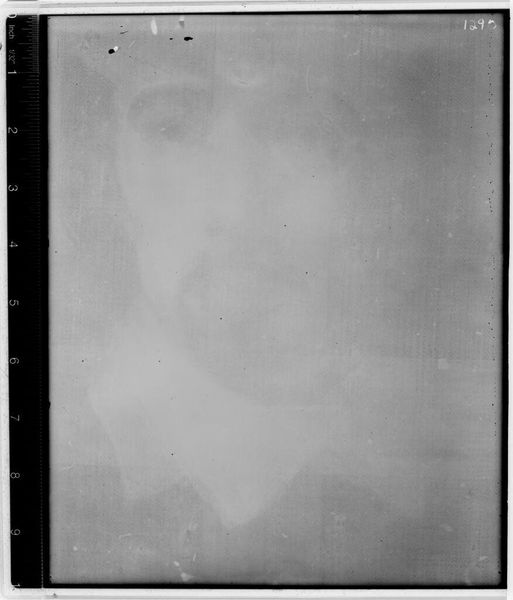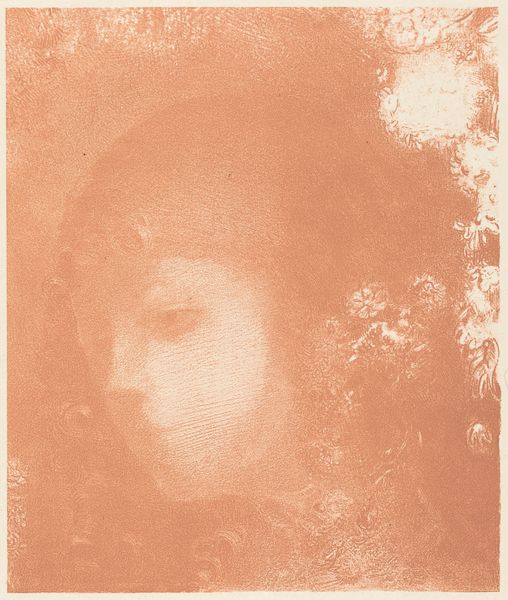
print, photography, gelatin-silver-print
#
portrait
#
negative space
# print
#
postmodernism
#
photography
#
gelatin-silver-print
#
modernism
#
monochrome
Dimensions: image: 78.74 x 55.88 cm (31 x 22 in.) sheet: 89.54 x 58.74 cm (35 1/4 x 23 1/8 in.)
Copyright: National Gallery of Art: CC0 1.0
Curator: This haunting piece is "Jacqueline Kennedy" by Eugene Feldman, crafted in 1964 as a gelatin-silver print. Editor: Immediately, I’m struck by the feeling of unease it evokes. The image seems to be emerging from a void. Curator: The process itself is intriguing. Gelatin-silver prints were a common photographic method at the time, valued for their tonal range and permanence. But Feldman pushes it here, doesn't he? He manipulates the process to create something less concrete, more spectral. We should remember that photographic paper, which the image is transferred on to, went through an intense production and was part of globalized consumer circuits. Editor: Absolutely. Considering this was made so soon after JFK's assassination, I think it is interesting to analyze it beyond just a regular photo. What does it signify as a portrait of the First Lady during that turbulent era of grief, media frenzy, and national identity? It's like the weight of that moment is pressing down, obscuring her image. Curator: Indeed. The blurring and high contrast may reflect the rapid news cycles and the public's insatiable demand for images of Jackie in the wake of such a traumatic event. The photograph itself becomes a commentary on media consumption and the ephemeral nature of fame. Editor: Yes, and let's think about her own efforts to control her image and shape the narrative around her and JFK's legacy, especially as a female figure and her influence at the time. This is not just about national trauma; it is also very specific to Jackie's positionality. How she was portrayed, how she chose to represent herself. The monochrome palette only amplifies that sense of controlled sorrow, wouldn't you agree? Curator: Absolutely. It certainly goes beyond mere documentation. Editor: Examining this artwork through a lens of social context unveils not just loss, but a deeper commentary on the intersections of gender, politics, and image construction in times of crisis. Curator: I concur. It really encapsulates the political and the personal in an image rendered materially interesting through specific choices and labor. Editor: Exactly. It’s a piece that compels us to reflect on both the medium and its multifaceted context.
Comments
No comments
Be the first to comment and join the conversation on the ultimate creative platform.
